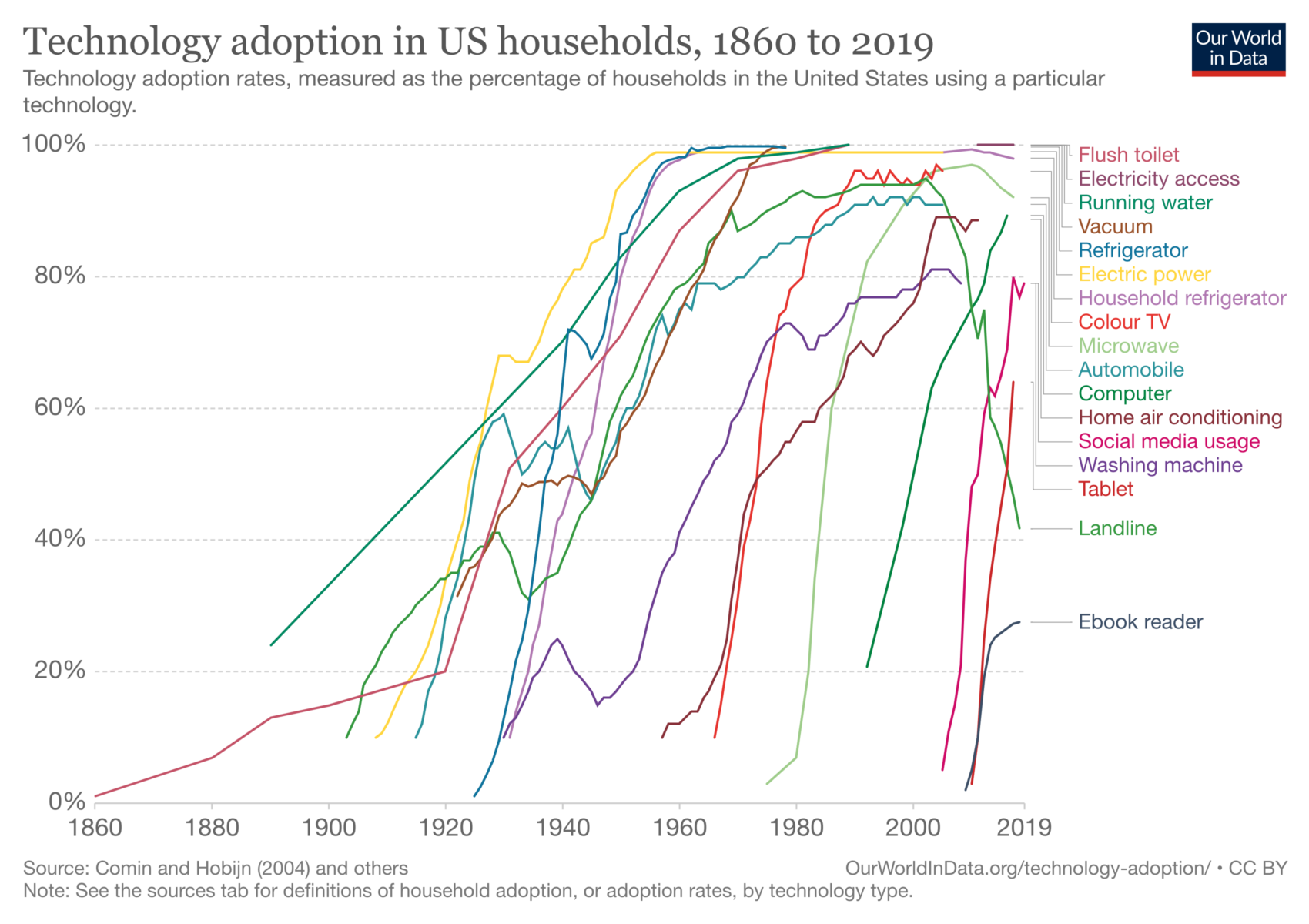
Source: Our World In Data
I love this Our World In Data chart spotted by Invictus. It tells quite an amazing story.
It took nearly a century for the flush toilet to approach 80% household penetration. Electricity took 30 years to get to 80%; Refrigerators 20 years; cell phones 15 years; Social media 12 years.
The pace of adoption has only accelerated over time. Each new innovative technology that achieves a mass market appeal simply fades into the background of our lives.
It is easy to forget that each of these was at one time are brand new ways of doing something that had been done differently for countless millenia. They alter how we live and work, modify our daily routines, change the fabric of our lives.
And then, they become invisible.
They become ordinary, taken for granted, part of the ignored background — just there.
Unless they are broken, do you ever think about electricity, running water, indoor plumbing (a polite phrase for toilets)? When was the last time you thought about your furnace or hot water heater? Antibiotics? Air conditioners? Streaming video, Spreadsheets, Personal publishing? To say nothing of the super computers in your pocket? The camera you don’t even think twice about is better than the best manufactured in high tech professional units made a decade ago. That is to say nothing of the quality of the portable television studio you walk around with in your hand.
We don’t even think about these things or how we would live without them. Watch any movie from the 1990s or early 2000s, and you cannot help but quickly notice the lack of smart phones. No Google maps, no texting, no social media. Entire plot lines fall apart: Stuck somewhere? Just call an Uber. Oh, wait . . .
These new technologies represent not a small incremental move forward, but a wholesale stampede into a brave new and different world. Usually better, occasionally not — I am looking at you, Facebook — but still a world that would be unrecognizable to someone from just 30 years ago.
As noted previously, the pandemic has taken the pre-exiting adaption trends and supercharged them. Covid-19 may have even brought the future forward by 3-5 years.
Is it any wonder that for the past 6 months, the Nasdaq 100 has been on fire…?
Previously:
How Much Has the World Changed? Not much (June 16, 2020)
FAANMG Stock Prices Reflect Global, Not US Recovery (July 17, 2020)
How Externalities Affect Systems (August 14, 2020)

